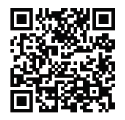All about broadband internet
Broadband is short for “broad bandwidth.” It’s a type of high-speed internet connection introduced in the late 1990s that replaced the dial-up internet technology of the day. By using a different frequency from landline phones, it could be “always on,” meaning there was no longer a need to interrupt your phone service every time you wanted to connect.
Broadband, and especially fiber broadband, provides the fastest internet connections today, making it the most common type of internet service. And there are a number of different broadband technologies available.
Let’s take a closer look at how broadband technology works.
How does broadband internet work?
A broadband connection uses a line exclusively for data transmission. Fiber broadband uses specialized fiber-optic cables, while DSL broadband uses copper wires (also used for phone lines). Cable broadband uses coaxial cables (also used for cable TV), and satellite and 4G/5G LTE broadband connections are wireless.
Each type of connection uses different frequencies that enable a range of speeds. An internet service provider (ISP) uses a network of equipment—buried cables, powerful computers, routers, switches, and more—to connect you to the internet.
Types of broadband internet
DSL internet
DSL (Digital Subscriber Line) was one of the earliest forms of broadband and is still a commonly used service today. DSL uses a single pair of copper wires in a telephone line for a high-speed data connection. The DSL signal runs on different frequencies from the phone lines, making competing phone and internet access a thing of the past. Using a modem to bring the connection from your telephone line to your computer allows the DSL to get more bandwidth, which increases speeds. DSL speeds today tend to top out around 140 Mbps.
Cable internet
Cable internet is about as common as DSL. It uses the same coaxial cables that transmit TV service to carry a high-speed internet connection. Using a special type of cable modem, you can connect to these lines and enjoy a high-speed, uninterrupted data connection. Cable internet speeds can be up to 940 Mbps for downloading and up to 50 Mbps for uploading.
Fiber internet
Fiber internet (like Quantum Fiber!) uses special fiber-optic cables that send data as pulses of light over thousands of tiny, transparent fiber strands. Because light is the fastest way to transmit data, fiber-optic internet delivers an incredibly fast and extremely reliable connection with mind-boggling multi-gig speeds up to 8 Gbps.
Satellite internet
Satellite internet transmits data back and forth from satellites orbiting the Earth. It’s not quite as fast or consistent as other types of broadband internet, but it can be used anywhere in the world. Satellite speeds for downloading are usually between 25 Mbps to 100 Mbps, with an average of 25 Mbps for uploading.
Wireless internet
Wireless internet, such as 4G and 5G, is also available by satellite. It’s most common in rural areas that don’t have the infrastructure for wired internet networks (DSL, cable, or fiber). This type of service is typically offered by wireless phone companies, but telecom companies often provide wireless service options as well.
Broadband and WiFi – what’s the difference?
Broadband is the internet connection to your home or business. WiFi is the wireless connection you use in the home or business to connect to the broadband service. The broadband service that comes into the modem is converted to a wireless signal by a router or other WiFi solution, allowing you to connect multiple devices wirelessly to the internet.
Gone forever are the days of dial-up. As fiber internet and other types of broadband technologies advance by the year, the speeds we can access and what we can do online seems virtually unlimited. No matter the type of broadband service, it’s all part of the amazing internet age we live in. Welcome to the future.
This content is provided for informational purposes only and may require additional research and substantiation by the end user. In addition, the information is provided “as is” without any warranty or condition of any kind, either express or implied. Use of this information is at the end user’s own risk. All third-party company and product or service names referenced in this article are for identification purposes only and do not imply endorsement or affiliation with Quantum Fiber. This document represents Quantum Fiber’s products and offerings as of the date of issue. Services not available everywhere. Quantum Fiber may change or cancel products and services or substitute similar products and services at its sole discretion without notice. ©2024 Q Fiber, LLC. All Rights Reserved. Quantum, Quantum Fiber and Quantum Fiber Internet are trademarks of Quantum Wireless LLC and used under license to Q Fiber, LLC.
Was this information helpful?








